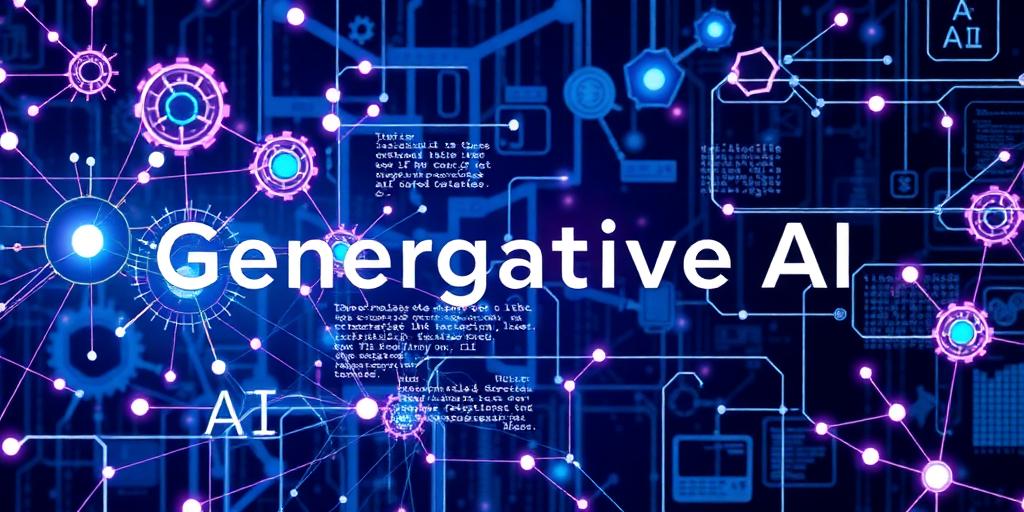The advent of generative artificial intelligence, exemplified by models like ChatGPT, has profoundly reshaped our interaction with technology and information. These sophisticated systems are capable of generating human-like text, answering complex questions, and even creating original content. But how do these powerful tools actually function beneath the surface? Understanding the underlying mechanisms of Generative AI, particularly Large Language Models (LLMs) like ChatGPT, demystifies their capabilities and illuminates their potential.
The Core: Large Language Models (LLMs)
At its heart, ChatGPT is a Large Language Model (LLM). LLMs are neural networks characterized by an immense number of parameters (often billions or even trillions) and are trained on vast datasets of text and code. The primary objective of an LLM during its initial training phase is to predict the next word or token in a sequence, based on the preceding context. This seemingly simple task, performed on an unprecedented scale, enables the model to learn the statistical relationships, grammar, facts, and even stylistic nuances embedded within human language.
The Brain Architecture: The Transformer
Central to the efficacy of modern LLMs is the Transformer architecture, introduced by Google in 2017. Prior to the Transformer, recurrent neural networks (RNNs) and long short-term memory (LSTM) networks were used, but they struggled with long-range dependencies in text and were difficult to parallelize during training. The Transformer architecture revolutionized this by primarily relying on a mechanism known as "self-attention."
The Power of Self-Attention
Self-attention allows the model to weigh the importance of different words in the input sequence when processing each word. For instance, in the sentence "The quick brown fox jumped over the lazy dog," when the model processes "dog," it can simultaneously consider its relationship to "fox" and "jumped," even if they are far apart in the sequence. This parallel processing capability and the ability to capture long-range dependencies are critical for understanding context and generating coherent, relevant responses. Unlike traditional recurrent networks, the Transformer can process all parts of an input sequence simultaneously, significantly accelerating training times for massive datasets.
Training Generative AI: From Data to Knowledge
The training regimen for models like ChatGPT is typically a multi-stage process:
- Pre-training: Massive Unsupervised Learning: The model is initially pre-trained on an enormous corpus of text data collected from the internet (e.g., books, articles, websites, code). During this phase, the model learns to predict missing words, complete sentences, or predict the next word in a sequence. This unsupervised learning allows the model to develop a generalized understanding of language, grammar, facts, and common reasoning patterns. This is where the model acquires its vast 'knowledge' base.
- Fine-tuning: Reinforcement Learning from Human Feedback (RLHF): After pre-training, models like ChatGPT undergo a crucial fine-tuning stage. This often involves Reinforcement Learning from Human Feedback (RLHF). Human labelers rate the quality, helpfulness, and safety of different model outputs for a given prompt. This feedback is then used to further train the model, aligning its behavior with human preferences and making its responses more conversational, relevant, and less prone to generating harmful or nonsensical content. This is a key differentiator for models specifically designed for interactive dialogue.
The Generative Process: Crafting Responses
When you interact with ChatGPT, the process of generating a response unfolds as follows:
- Tokenization: Your input (prompt) is first broken down into smaller units called "tokens." A token can be a word, part of a word, or punctuation.
- Encoding: These tokens are then converted into numerical representations (embeddings) that the neural network can process.
- Next Token Prediction: The model, leveraging its transformer architecture and vast learned knowledge, predicts the most probable next token given the input and all previously generated tokens. This is a probabilistic process, where the model assigns a likelihood to every possible next token.
- Sampling: Instead of always picking the absolute most probable token (which can lead to repetitive or generic text), various sampling strategies are employed (e.g., top-k, nucleus sampling) to introduce a degree of randomness. This allows for more creative, diverse, and human-like responses.
- Iterative Generation: This process repeats, with each newly predicted token added to the sequence, forming the context for the prediction of the subsequent token, until a complete response is formed (e.g., reaching a designated end-of-sequence token or a maximum length).
Conclusion
Generative AI models like ChatGPT represent a monumental leap in artificial intelligence, built upon the foundation of Large Language Models and the transformative power of the Transformer architecture. Their ability to process and generate human language stems from meticulous training on immense datasets, refined through human feedback to ensure relevance and safety. While the technology continues to evolve, a firm grasp of these core principles provides invaluable insight into the mechanics of these truly remarkable intelligent systems.









